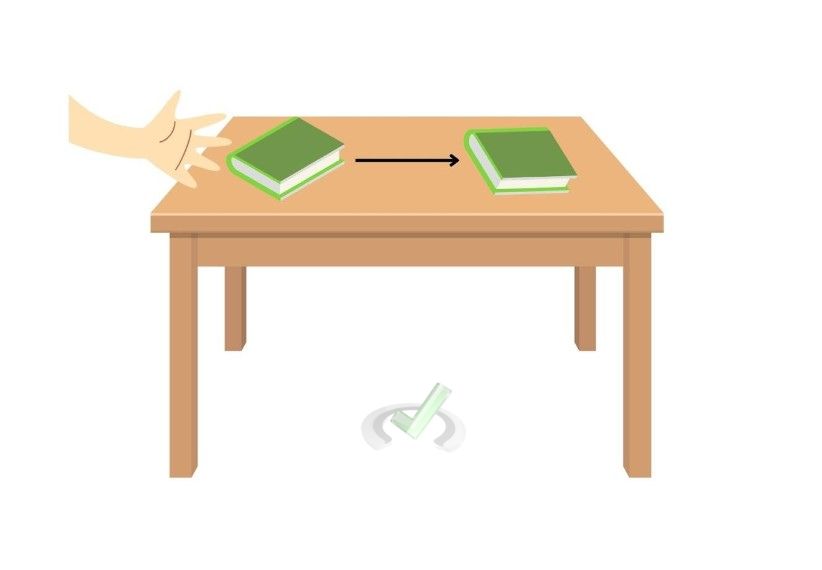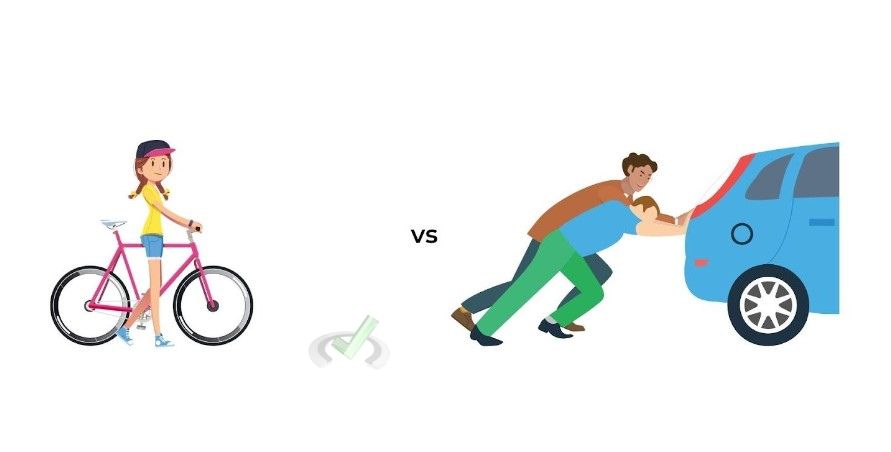When you push a shopping cart or kick a soccer ball, the objects move because of the forces you apply. These actions are explained by Newton's laws of motion, which describe how forces cause changes in the motion of objects.
Newton's laws of motion explain three fundamental principles in Physics. These principles describe how objects move in response to forces. Sir Isaac Newton formulated these laws in the 17th century. They are still used today to explain a wide range of physical phenomena.
Understanding these laws helps us see how forces affect the motion of objects, from everyday items to complex systems like cars and airplanes.
I. Newton's First Law of Motion
Newton's First Law of Motion is called the law of inertia. It says that an object at rest will stay at rest. Meanwhile, an object in motion will stay in motion at a constant velocity unless acted upon by an unbalanced force.
The Law of Inertia
Inertia is the tendency of an object to resist changes in its motion. The more mass an object has, the more inertia it has. This means heavier objects require more force to change their motion than lighter objects.

For example, if you slide a book across a table, it will eventually stop because of the force of friction acting on it. Friction is a force that opposes motion. Without friction, the book would keep moving indefinitely at the same speed and direction because there would be no force to stop it.
Types of Friction
- Static Friction: The friction force that resists the start of sliding motion between two surfaces.
- Kinetic Friction: The friction force that opposes the movement of two surfaces sliding past each other.
II. Newton's Second Law of Motion
Newton's Second Law of Motion explains how the force acting on an object relates to its mass and acceleration. It provides a clear formula to calculate this relationship.
The Law of Acceleration
Newton's Second Law can be summarized with the formula:
Force=Mass×Acceleration
- Force (F): A push or pull that acts on an object. It is measured in Newtons (N).
- Mass (m): The amount of matter in an object. It is measured in kilograms (kg).
- Acceleration (a): The rate at which an object's velocity changes. It is measured in meters per second squared (m/s²).
This law means that the acceleration of an object depends on the mass of the object and the amount of force applied. For example, pushing a car requires more force than pushing a bicycle because the car has more mass. According to Newton's Second Law, more mass means more force is needed to achieve the same acceleration.

III. Newton's Third Law of Motion
Newton's Third Law of Motion states that for every action, there is an equal and opposite reaction. This principle explains the mutual forces of action and reaction between two interacting objects.
The Action-Reaction Law
Action and reaction forces are always equal in magnitude but opposite in direction. For example, when you jump off a boat, you push the boat backward with your feet (action), and the boat pushes you forward (reaction).
This is why the boat moves in the opposite direction. Another example is the recoil of a gun. When a bullet is fired, the gun pushes the bullet forward (action), and the bullet pushes the gun backward (reaction).

IV. Applications of Newton's Laws
Newton's laws of motion are not just theoretical concepts; they have practical applications in many areas of life. Let's explore how these laws are used in everyday life and engineering.
Everyday Life
- Driving a Car: Newton's laws explain how engines provide force to accelerate cars and how brakes provide force to decelerate them.
- Sports: Athletes use Newton's laws to optimize their performance. For example, a sprinter uses force to accelerate from the starting line.
Engineering
- Building Structures: Engineers use these laws to ensure buildings and bridges can withstand forces like wind and earthquakes.
- Aircraft Design: Newton's laws help design airplanes that can take off, fly, and land safely by managing forces and motion.
V. Advanced Physics Topics Related to Newton's Laws
Understanding Newton's laws of motion is fundamental for studying more advanced physics topics. These topics extend the basic principles of motion and forces to more complex systems and are crucial for fields like engineering and medicine.
Kinematics
Kinematics is the study of motion but does not consider the forces that cause the motion. It involves describing the positions, velocities, and accelerations of objects. Understanding kinematics helps us predict the future position and velocity of an object if we know its current state and the forces acting on it.
Dynamics
Dynamics is the study of the forces and their effects on motion. It combines the principles of kinematics with the understanding of forces. Dynamics is essential for solving real-world problems where multiple forces interact and affect the motion of objects.
Biomechanics
Biomechanics applies the principles of mechanics, including Newton's laws, to understand how the human body moves and responds to forces. This field is crucial in medical studies for designing prosthetics, improving sports performance, and understanding injuries.
Electromagnetism
Electromagnetism studies how electric and magnetic fields interact with each other and with matter. Newton's laws play a role in understanding the forces between charged particles and magnetic fields. This topic is important for understanding a wide range of phenomena, from household appliances to advanced technologies in medical imaging.
VI. Wrap-Up and Key Terms
Let's review the key points covered about Newton's laws of motion:
Key Terms
- Newton's First Law: An object at rest stays at rest, and an object in motion stays in motion unless acted upon by an unbalanced force (inertia).
- Newton's Second Law: Force equals mass times acceleration (F = m × a).
- Newton's Third Law: For every action, there is an equal and opposite reaction.
VII. Practice Questions
Sample Practice Question 1
What does Newton's First Law of Motion state about an object at rest?
A. It will start moving by itself.
B. It will stay at rest unless acted upon by an unbalanced force.
C. It will stay in motion indefinitely.
D. It will change direction on its own.
Ans. B
Newton's First Law, also known as the law of inertia, states that an object at rest will remain at rest unless an unbalanced force acts on it.
Sample Practice Question 2
Which formula represents Newton's Second Law of Motion?
A. Force = Mass + Acceleration
B. Force = Mass / Acceleration
C. Force = Mass × Acceleration
D. Force = Acceleration / Mass
Ans. C
Newton's Second Law of Motion is represented by the formula F = m × a, where force equals mass times acceleration.







 To help you achieve your goal MCAT score, we take turns hosting these
To help you achieve your goal MCAT score, we take turns hosting these 





















 reviews on TrustPilot
reviews on TrustPilot